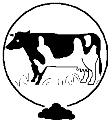Biological Systems Engineering, Department of

Manure Matters (newsletter)
Date of this Version
2002
Document Type
Article
Abstract
Assessing Odor Risk
Odors from animal production operations are a major concern in rural communities. Pressure from the public and the potential impact on the rural economy has caused strong emotional conflicts. Currently livestock producers and urban planning officials have few tools to objectively evaluate scientifically based setbacks between livestock operations and residential areas. Conversely, livestock producers have few tools available to them to demonstrate how odor control technologies can reduce the risk potential of odor incidents.
Recognizing this concern in Minnesota, the Minnesota Legislature provided funds to their University to develop a tool to help predict offsite odor movement from livestock and poultry facilities. This recommendation resulted in an appropriation from the 1997 Minnesota State Legislature. Funds were awarded to the Biosystems and Agricultural Engineering Department to develop the “Odor From Feedlots Setback Estimation Tool” (OFFSET). OFFSET is a simple tool that estimates the frequency of odor events at various distances from an animal production site.
Development of OFFSET involved the measurement of odor emissions from various animal production sites, assessment of downwind odors using trained field sniffers, comparisons of downwind odor measurements to standard air dispersion model results, measurement of odor reductions using various odor control technologies, and validation of the tool using community residents. Evaluation and resulting modifications of OFFSET continue through June 2002 with a project funded by the University of Minnesota Rapid Response Fund.
Over the past four years, approximately $830,000 has been spent on research to specifically develop the OFFSET method for animal agriculture in Minnesota. The research has focused on developing methods to quantify odor emissions, measuring odor emissions from different types of livestock and poultry operations, developing odor control technologies and monitoring the frequency and intensity of odor events in areas surrounding these farms.


Comments
Published by University of Nebraska – Lincoln’s Livestock Environmental Issues Committee.